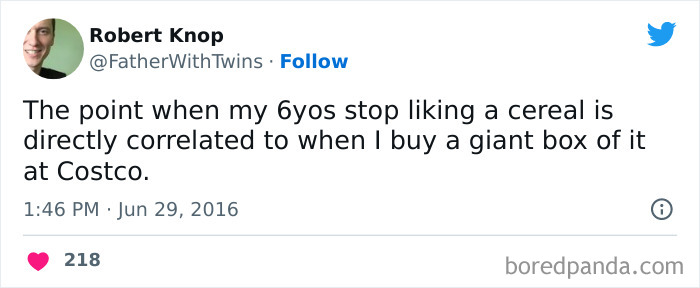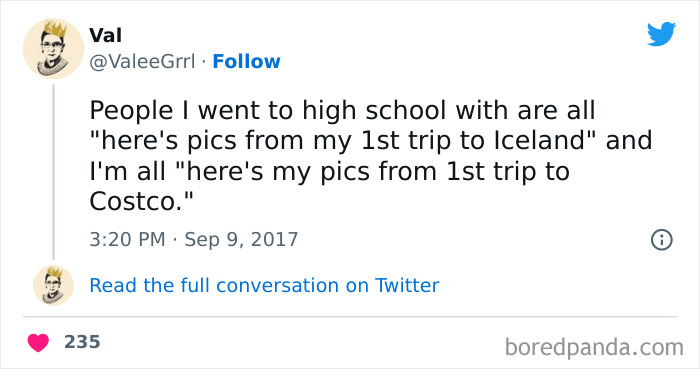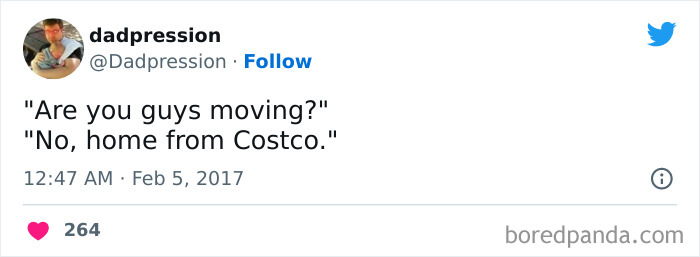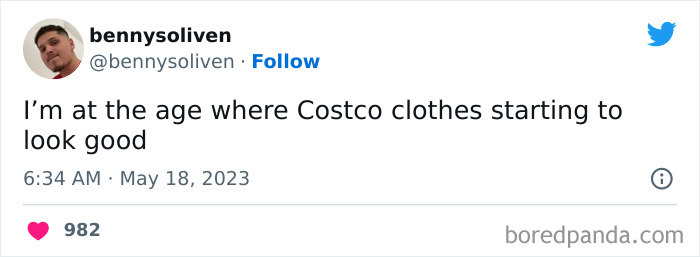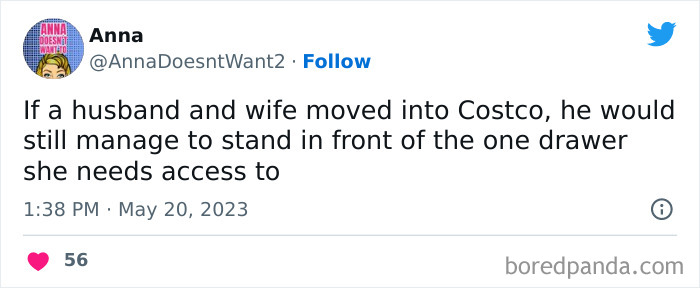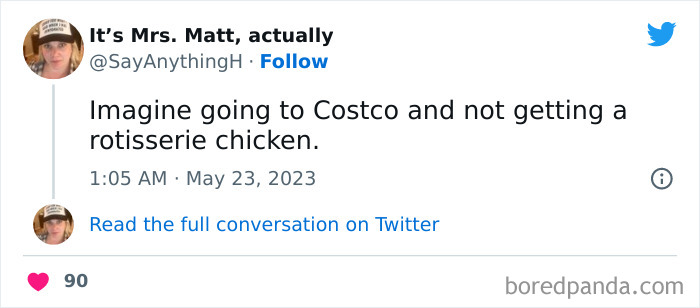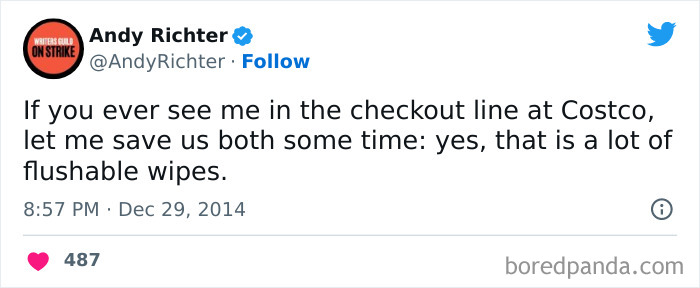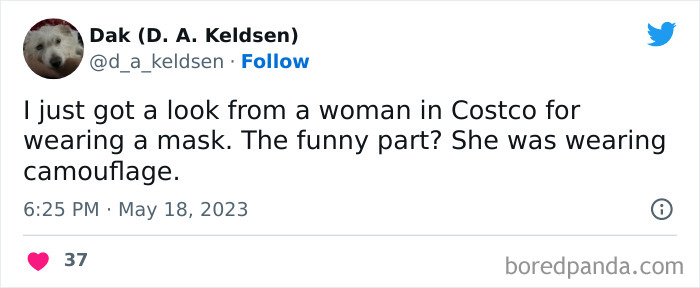
Twitter Is Cracking Up At Hilariously Accurate Posts About Costco, Here Are 30 Of The Best
Some people consider shopping a form of torture; however, others thrive as they make their way from aisle to aisle looking for the best offer. For the latter, Costco is often a popular choice. With an abundance of goods and discount deals, it might mesmerize the shopper and make them lose track of their time—some people can spend hours roaming the store, and there are Tweets to prove it.
We have gathered some of the best Twitter posts that sum up all that shopping at Costco entails. Whether it’s losing track of time or buying things in quantities you never expected to, you might find them quite amusing yet painfully accurate. Scroll down to find the Tweets on the list below and see if you can relate to any of them.
This post may include affiliate links.
Costco?! Estate sale?!! Tacos?!!! Where have you been all my life?!!!!
The history of Costco, or Costco Wholesale Corporation in full, can be traced back to 1976. That’s when, under the name of Price Club, the first store was opened in a converted airplane hangar located on Morena Boulevard in San Diego. Originally, it only served small businesses; however, the company soon realized it made sense to serve a certain number of non-business members as well.
By 1983, the first Costco warehouse was up and running in Seattle and in ten years time, Costco and Price Club merged to become Price/Costco that was in charge of 206 stores generating $16 billion in annual sales.
A large number of situations in these Tweets are likely familiar to anyone who has ever stepped foot into a Costco. The huge maze of aisles filled with piles of all sorts of products provides a spectacular shopping experience for someone who enjoys buying in bulk.
However, in order to be allowed to go crazy at such a store, one has to become a Costco member for a certain yearly fee. According to Zippia’s 2023 data, over 68 million households globally own such a membership, adding up to roughly 123 million people in total.
Investopedia revealed that membership dues comprise the majority of Costco’s profits. The clients are interested in taking full advantage of their memberships, costing them $60 or $120 dollars per year (Gold Star and Executive memberships respectively), which leads to high retention rates and nearly no money spent on advertising.
Post credits scenes are people clapping, superman retiring, supervillains leaving the city, the world found its peace again
Investopedia pointed out that traditional advertising that encourages customers to return to the store doesn’t make sense for Costco, as memberships bought once a year bring most of the profit rather than people coming back to shop repeatedly. Moreover, having invested in the membership, customers are inclined to come back themselves.
Saving on advertising is likely one of the reasons Costco can pay its employees a rather competitive hourly wage, which, according to Investopedia, leads to a highly motivated workforce. The latter in turn provides a good shopping experience for the customer, who is then more likely to renew their membership.
I jumped straight to the excitement part, but in my case was a place that sells brazilian empadas
Author and behavior change strategist, Jennifer Clinehens, uncovered Costco’s surprising psychological strategies that allow the company to reach rather impressive numbers in the industry, despite their seemingly counterintuitive business model (it makes its customers pay for the opportunity to shop, the store itself doesn’t present much decor wise, and quite a lot of products are sold in absurdly large quantities—a point that has been made in quite a few of these amusing Tweets).
Jennifer Clinehens believes there are five strategies at play when it comes to Costco’s success: scarcity, ‘Sunk Cost Fallacy”, reciprocity, ‘Peak-end Rule’, and salience. The author refers to the first one as the psychological principle that powers the store. According to her, Costco memberships create a feeling of scarcity and a fear of missing out, which leads to people wanting to be included in the group that receives special treatment, or special offers in this case.
Second on Clinehens’s list, the principle of ‘Sunk Cost Fallacy’ describes the phenomenon of people tending to stick with something they’ve already invested time and money in—an annual membership, for instance. The third strategy relates to the abundance of free sample booths—another feature lots of Twitter users seem to enjoy—scattered all over the store. Known as reciprocity, it is a persuasion technique based on the social norm of responding to positive actions with positive actions.
"It will be there". "The bakery has no phone." Lucy, you've just to believe, and it will be all right!
That’s not a bat sweetie, that’s a military assault drone
Load More Replies...Another one of Costco’s approaches, according to the behavior change strategist, is known as the ‘Peak-end Rule’. It suggests that people judge an entire experience on two main points—the emotional peak and its end, rather than the average of the overall experience. This strategy works well for Costco due to its excellent customer service and a returns policy that is favorable to the client. Wanting to return a faulty device, for instance, can be a common endpoint to some consumers, which is why it’s important to handle it in the right way.
The last point mentioned by Jennifer Clinehens is salience, which describes how prominent or emotionally striking something is. It applies to the “treasure hunt” Costco’s customers have to embark on after something they buy regularly is relocated in the store. That way, they have to walk around trying to find the product, which might make them notice something else that stands out and maybe even buy it.
Heavy British confusion here, thought we were talking about Iceland the shop not the country, was wondering why people would show off pictures of that!
Is costco that kind of store where you can find literally anything?
A 2022 survey revealed that as much as 75% consumers buy certain products in bulk. The most common categories of goods typically bought in large quantities include paper products (55%), household cleaning products (35%), shelf stables (26%), and personal care items (22%).
I’ve never been to Costco we don’t have one anywhere here where I live. We do have a Sam’s club, is it similar?
It's Memorial Day weekend, and the Costco doesn't have any of their huge apple pies! How can you have an American holiday without a huge Costco apple pie!
I'm doomed. Costco quit doing their cold and frozen delivery service. I'm homebound
Every vacation we visit the area's Costco and stock up for the condo. The main attraction: cheesecake. 😋
Barricade with besties in Costco is my Zombie apocalypse game plan.
I’ve never been to Costco we don’t have one anywhere here where I live. We do have a Sam’s club, is it similar?
It's Memorial Day weekend, and the Costco doesn't have any of their huge apple pies! How can you have an American holiday without a huge Costco apple pie!
I'm doomed. Costco quit doing their cold and frozen delivery service. I'm homebound
Every vacation we visit the area's Costco and stock up for the condo. The main attraction: cheesecake. 😋
Barricade with besties in Costco is my Zombie apocalypse game plan.

 Dark Mode
Dark Mode 

 No fees, cancel anytime
No fees, cancel anytime 






















